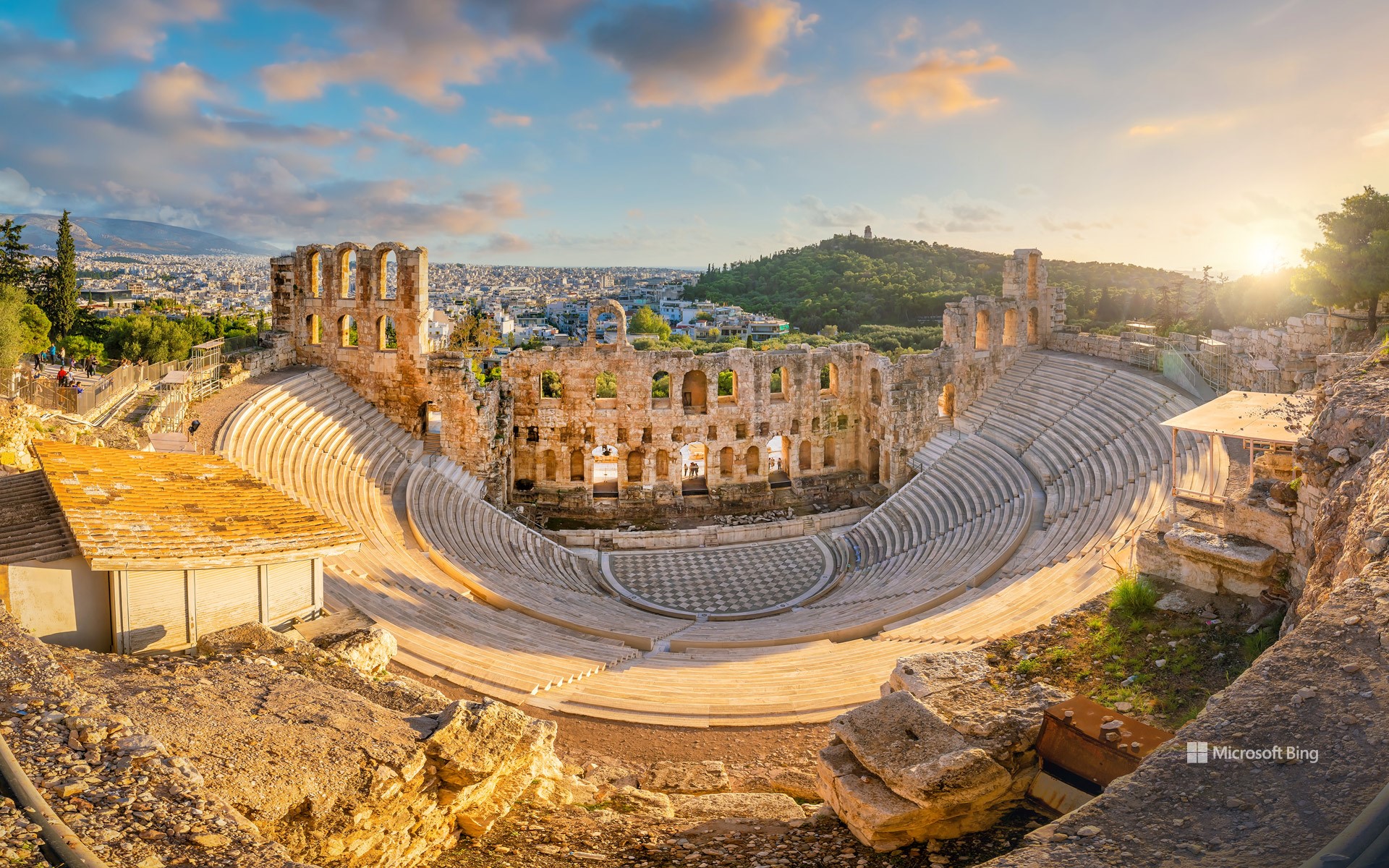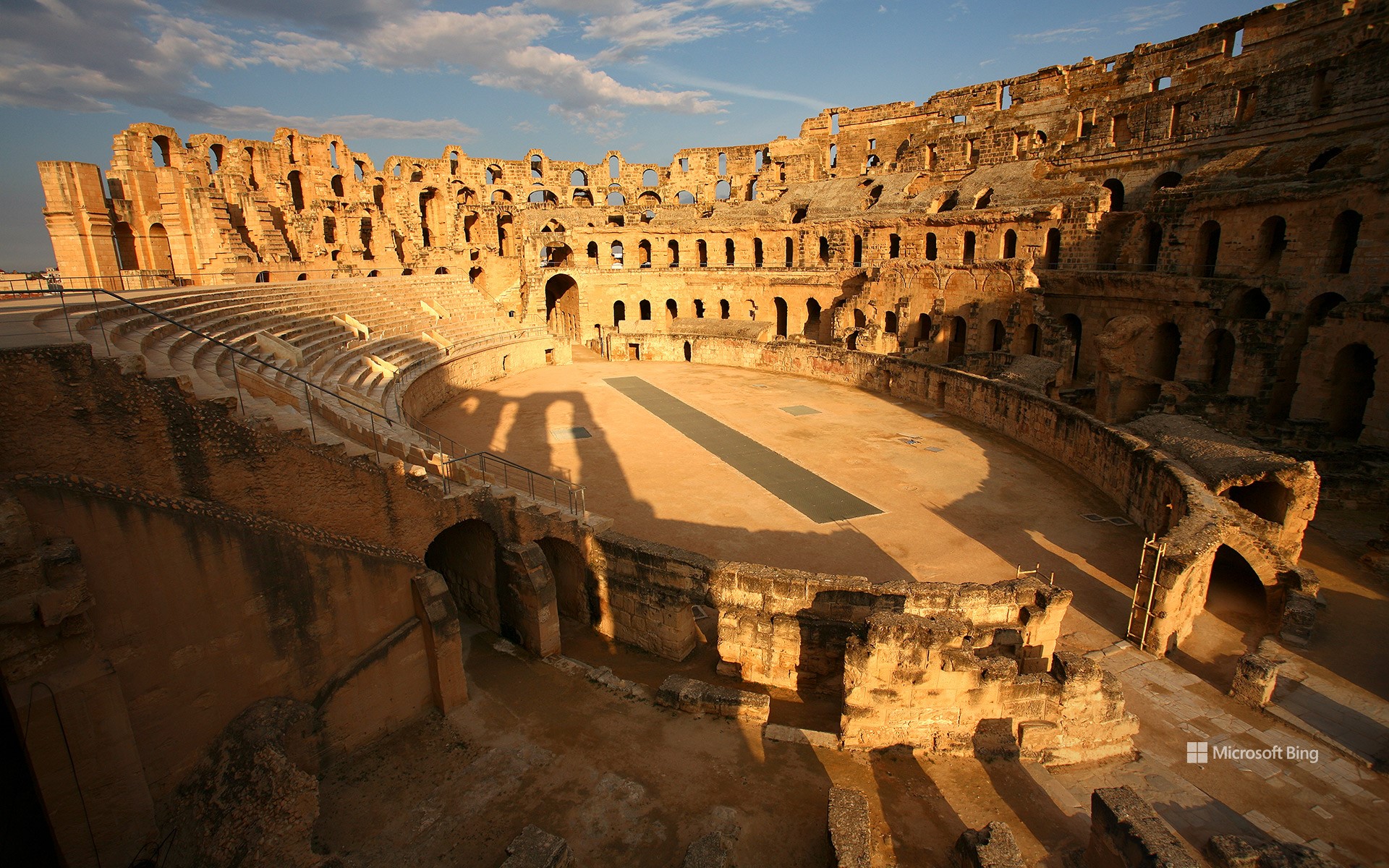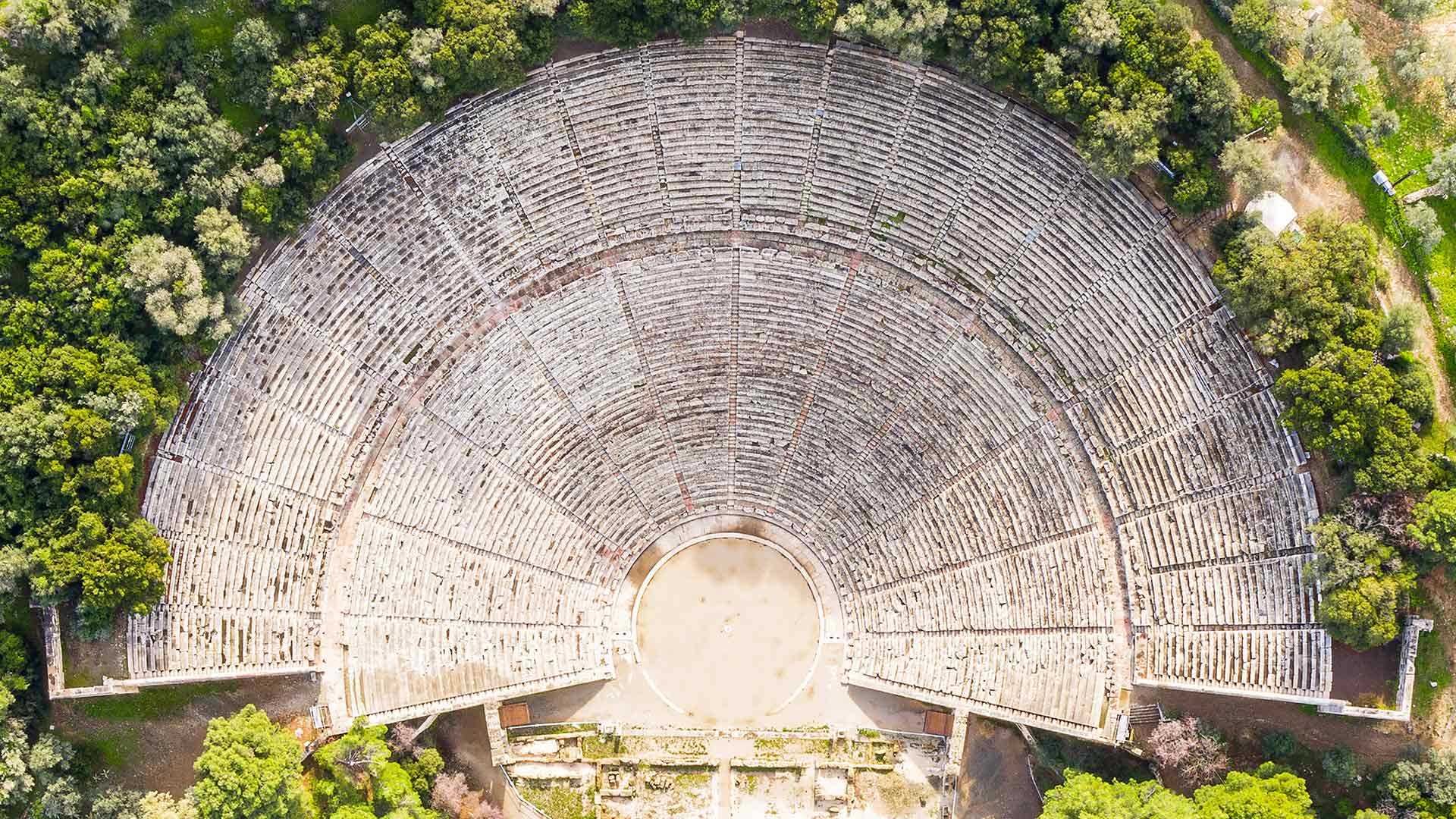标签 剧场 下的文章
希罗德·阿提库斯剧场,雅典卫城,希腊 Odeon of Herodes Atticus theater, Acropolis of Athens, Greece (© f11photo/Getty Images)

希罗德·阿提库斯剧场,雅典卫城,希腊 Odeon of Herodes Atticus theater, Acropolis of Athens, Greece (© f11photo/Getty Images)
向戏剧致敬 A standing ovation for theaters
世界戏剧日
灯光亮起,帷幕升起,今天是世界戏剧日。自 1961 年以来,国际戏剧协会每年都会举办这一年度盛事,旨在让全球观众和艺术家共同庆祝戏剧的魅力,感受叙事的力量、创造力和文化的交汇。每年,国际戏剧协会都会邀请一位享誉全球的戏剧界代表发表主题演讲,这些演讲被翻译成50多种语言,与世界各地的人们分享。这些演讲强调了戏剧在社会中的重要作用,它既可以是作为现实的镜子,也是推动变革的力量,或是激发想象力的庇护所。无论是莎士比亚的独白,还是先锋实验剧场,戏剧艺术始终在发展演变,但它的核心始终不变:人与人之间的情感联系。
那么,在这样一个重要的日子里,哪里才是最佳的庆祝地点呢?这座位于希腊雅典卫城脚下的赫罗德·阿提库斯剧场,近两千年来一直是戏剧与音乐的舞台。剧场建于公元 161 年,由富有的罗马人希罗德斯·阿提库斯为纪念其亡妻而建。从古典悲剧到现代音乐会,这里仍在续写戏剧艺术的辉煌篇章。尽管历经数个世纪,其卓越的声学设计依然让每一场演出都能完美回响。
World Theater Day
Lights on, curtains rise—it's World Theater Day. Since 1961, this annual event by the International Theater Institute (ITI) has united audiences and artists in a shared appreciation of storytelling, creativity, and culture. Every year, a renowned theater figure is invited by ITI to deliver a message that resonates across the industry. Their words are translated into more than 50 languages and shared with people all over the world. These messages highlight theater's role in society—be it as a mirror to reality, an agent of change, or a refuge for the imagination. From Shakespeare's soliloquies to experimental avant-garde productions, theater has continuously evolved while holding onto its core: human connection.
So, what better place to celebrate today than at the Odeon of Herodes Atticus? Located at the foot of the Acropolis in Athens, Greece, this stone Roman theater has been setting the scene for performances for nearly two millennia. Built in 161 CE by the wealthy Roman Herodes Atticus in memory of his wife, the ancient venue has hosted everything from classical tragedies to modern-day concerts. Despite the passing centuries, its acoustics still strike the right chord.
埃尔杰姆露天剧场,突尼斯 Amphitheatre of El Jem, Tunisia (© Westend61/Getty Images)

埃尔杰姆露天剧场,突尼斯 Amphitheatre of El Jem, Tunisia (© Westend61/Getty Images)
为罗马建筑“起立欢呼” A 'standing ovation' to Roman architecture
埃尔杰姆露天剧场,突尼斯
埃尔杰姆露天剧场位于突尼斯东部小城镇艾尔杰姆,始建于公元3世纪的罗马帝国时期,以其令人惊叹的建筑设计闻名。它由巨石砌成,可以容纳35000名观众,至今仍然是世界上最大的露天剧场之一。这座露天剧场自1979年就被列为联合国教科文组织世界遗产地,被认为是世界上保存最完好的罗马建筑之一,在体量和设计上几乎可以和罗马竞技场比肩。
剧场地下有着复杂的隧道系统,对游客开放参观。尽管历史悠久,剧场的地面仍然保存完好,游客还可以在上面行走,代入一下古代表演者的体验。
Amphitheatre of El Jem, Tunisia
This impressive structure is the Amphitheatre of El Jem, in the Tunisian town of the same name. Made entirely from stone blocks, it was built in the 3rd century CE, when this area was Thysdrus, a city of ancient Rome. Once capable of seating up to 35,000 spectators, it is the largest colosseum in North Africa and one of the largest in the world. A UNESCO World Heritage Site since 1979, it is one of the best-preserved Roman amphitheatres, almost equal in grandeur to the Colosseum in Rome.
Beneath the arena, there is an extensive underground network of tunnels and chambers, which are open to visitors. Despite its age, the arena floor is still preserved, and visitors can walk on it, following in the footsteps of gladiators and others who stepped out before huge crowds, nearly 2,000 years ago.
埃庇道鲁斯剧场, 希腊阿尔戈利斯省 Ancient theater of Epidaurus in Argolis province, Greece (© George Pachantouris/Getty Images)

埃庇道鲁斯剧场, 希腊阿尔戈利斯省 Ancient theater of Epidaurus in Argolis province, Greece (© George Pachantouris/Getty Images)
声学杰作 Masterpiece of acoustic science
埃庇道鲁斯剧场,希腊
埃庇道鲁斯剧场隐藏在离雅典约100英里的埃庇道鲁斯山丘之中。它是一座保存完好的古希腊剧场,巨大的露天场地可以容纳超过14000名观众。这种希腊礼堂分三个部分,一是圆形主舞台,二是背景建筑,三是次第升高的观众席。埃庇道鲁斯剧场是一项工程壮举,它的建筑结构非常精妙,使剧场拥有完美的音响效果和良好的观赏效果。这座剧场原本是用于供奉古希腊医药之神阿斯克勒庇俄斯的。自1954年以来,该剧场上演了多位著名希腊演员和国际演员的戏剧和音乐表演。
Ancient theater of Epidaurus, Greece
Hidden in the hills of Epidaurus, about 100 miles from Athens, Greece, lies the ancient theater of Epidaurus. It's the embodiment of perfect classical proportions applied to the performing arts. A well-preserved Greek theater from ancient times, the massive open-air venue can hold more than 14,000 spectators. The three main features of the Greek auditoria are the orchestra, a circular space used as the main stage, the skene or stage building used as a backdrop, and lastly the cavea, or the auditorium, an ascending row of seats in a semi-circular shape. It is a feat of engineering built into the hillside with such precision that the theater has both perfect acoustics and an optimal structure for better viewing. The theater was dedicated to the Greek god of medicine, Asclepius. Since 1954, the theater has welcomed drama and music performances from several famous Greek and international actors.